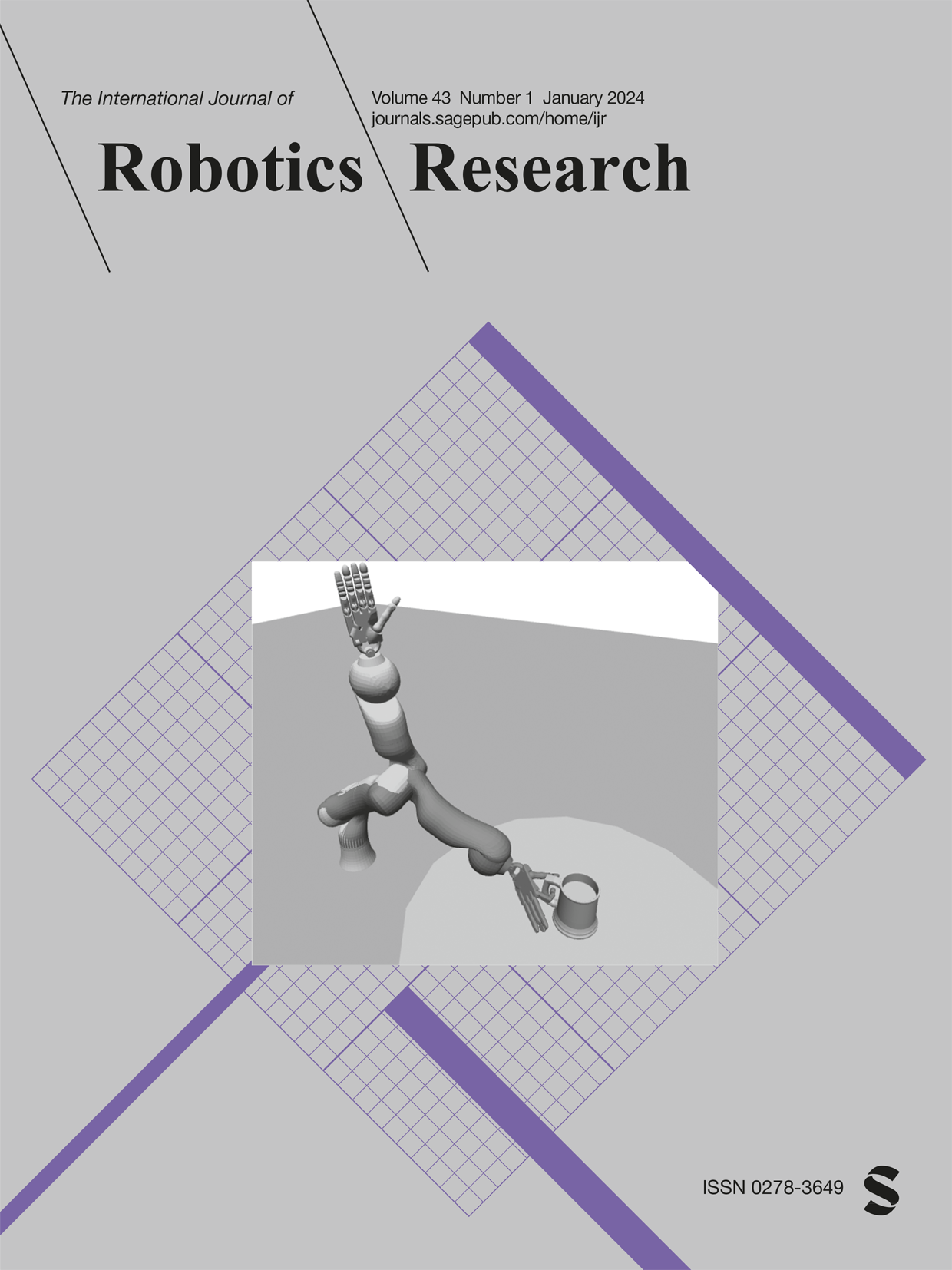离线动作库和在线MPC提供高级移动技能
IF 5
1区 计算机科学
Q1 ROBOTICS
引用次数: 18
摘要
我们描述了一个基于优化的框架,用于为有腿和轮子的机器人执行复杂的运动技能。由于当前的计算限制,在长时间范围内生成复杂运动通常需要离线计算,并且主要通过轨迹优化(to)来实现。相比之下,模型预测控制(MPC)专注于轨迹的在线计算,即使在存在不确定性的情况下也具有鲁棒性,尽管大多在较短的时间范围内,并且容易在任务目标范围内生成非最优解。我们的文章通过将离线运动库和在线MPC相结合,将复杂的长期计划与反应性的短期解决方案相结合,克服了这种权衡。我们从离线轨迹开始,例如,可以通过TO或基于采样的方法生成。此外,多个离线轨迹可以从一个运动库组成一个单独的机动。然后,我们使用这些离线轨迹作为在线MPC的成本,使我们能够在多个合成运动之间平滑地混合,即使存在不连续的过渡。MPC根据测量状态进行优化,从而产生反馈控制,通过对干扰做出反应并展望离线轨迹来稳健地执行任务。有了我们的贡献,运动设计师可以选择他们最喜欢的方法离线迭代行为设计,而无需调整机器人实验,使他们能够快速创建新的行为。我们的实验在传统的四足机器人ANYmal及其滚轮行走版本上演示了复杂的动态运动。此外,文章的发现有助于评估五种规划算法。本文章由计算机程序翻译,如有差异,请以英文原文为准。
Offline motion libraries and online MPC for advanced mobility skills
We describe an optimization-based framework to perform complex locomotion skills for robots with legs and wheels. The generation of complex motions over a long-time horizon often requires offline computation due to current computing constraints and is mostly accomplished through trajectory optimization (TO). In contrast, model predictive control (MPC) focuses on the online computation of trajectories, robust even in the presence of uncertainty, albeit mostly over shorter time horizons and is prone to generating nonoptimal solutions over the horizon of the task’s goals. Our article’s contributions overcome this trade-off by combining offline motion libraries and online MPC, uniting a complex, long-time horizon plan with reactive, short-time horizon solutions. We start from offline trajectories that can be, for example, generated by TO or sampling-based methods. Also, multiple offline trajectories can be composed out of a motion library into a single maneuver. We then use these offline trajectories as the cost for the online MPC, allowing us to smoothly blend between multiple composed motions even in the presence of discontinuous transitions. The MPC optimizes from the measured state, resulting in feedback control, which robustifies the task’s execution by reacting to disturbances and looking ahead at the offline trajectory. With our contribution, motion designers can choose their favorite method to iterate over behavior designs offline without tuning robot experiments, enabling them to author new behaviors rapidly. Our experiments demonstrate complex and dynamic motions on our traditional quadrupedal robot ANYmal and its roller-walking version. Moreover, the article’s findings contribute to evaluating five planning algorithms.
求助全文
通过发布文献求助,成功后即可免费获取论文全文。
去求助
来源期刊
CiteScore
22.20
自引率
0.00%
发文量
34
审稿时长
6-12 weeks
期刊介绍:
The International Journal of Robotics Research (IJRR) has been a leading peer-reviewed publication in the field for over two decades. It holds the distinction of being the first scholarly journal dedicated to robotics research.
IJRR presents cutting-edge and thought-provoking original research papers, articles, and reviews that delve into groundbreaking trends, technical advancements, and theoretical developments in robotics. Renowned scholars and practitioners contribute to its content, offering their expertise and insights. This journal covers a wide range of topics, going beyond narrow technical advancements to encompass various aspects of robotics.
The primary aim of IJRR is to publish work that has lasting value for the scientific and technological advancement of the field. Only original, robust, and practical research that can serve as a foundation for further progress is considered for publication. The focus is on producing content that will remain valuable and relevant over time.
In summary, IJRR stands as a prestigious publication that drives innovation and knowledge in robotics research.

 求助内容:
求助内容: 应助结果提醒方式:
应助结果提醒方式:


